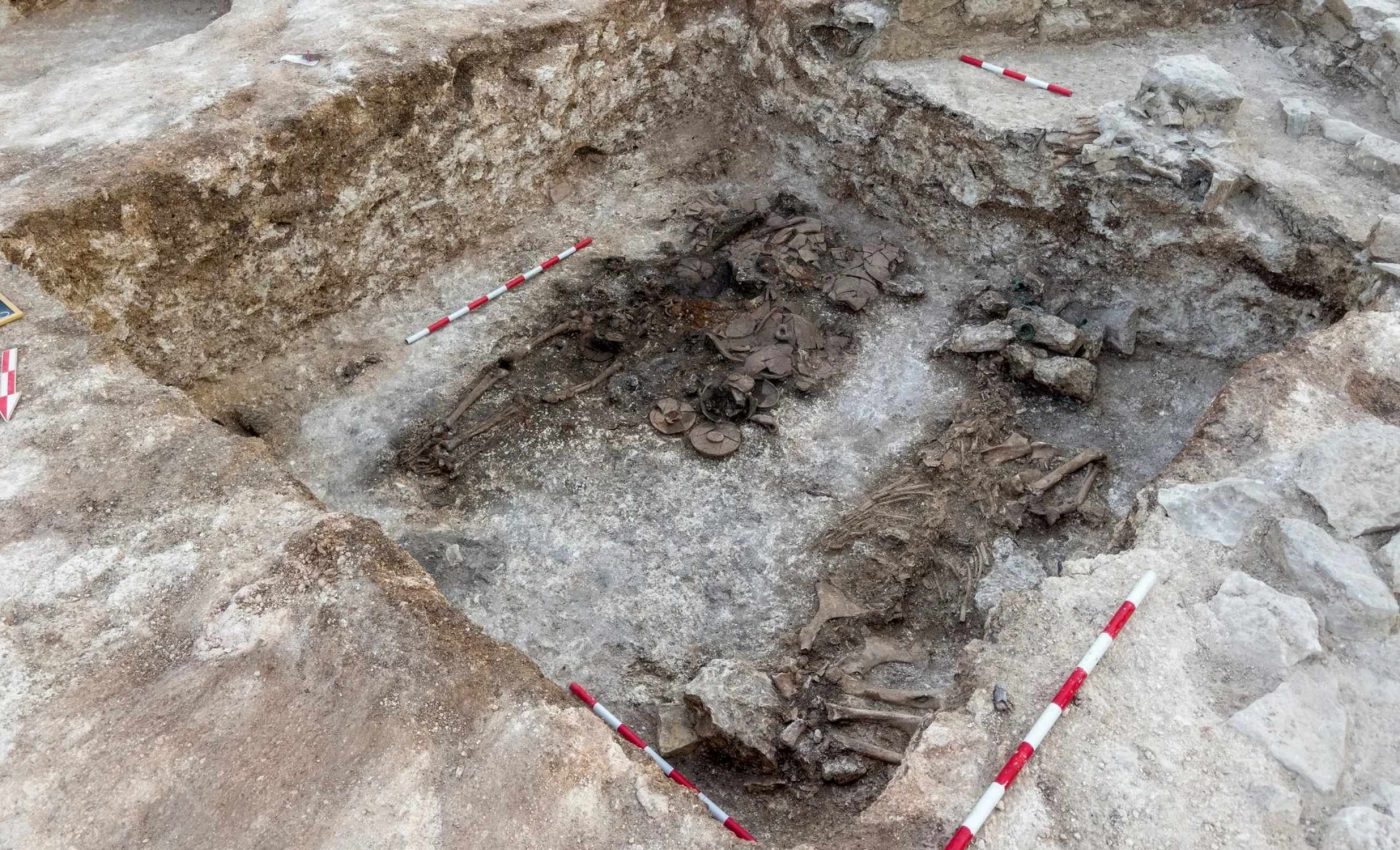
2,100-year-old tomb of a Thracian warrior discovered containing jewelry and weapons
A 2,100-year-old tomb from southeastern Bulgaria has revealed a Thracian warrior laid to rest with a gilded silver wreath, weapons, and his horse. The burial sits in the Sakar Mountains region, where ancient communities built mounds to honor elites.
The finds are now on view in Sofia in an exhibition that runs from mid August to mid October of 2025, presenting the artifacts as they were recovered and conserved.
Unearthing a Thracian warrior
The work was led by Dr. Daniela Agre of the National Archaeological Institute with Museum at the Bulgarian Academy of Sciences (NAIM-BAS). Her team excavated the mound as part of a rescue project tied to modern infrastructure.
Preliminary analysis places the man at 35 to 40 years old and situates his life in the late Hellenistic period, around 150 to 100 B.C..
The wreath encircled his skull and the burial goods included iron spears, a shield, silver jewelry, ceramic and glass vessels, and a gem set knife.
Excavation notes describe a richly furnished grave near Kapitan Petko Voyvoda in the Topolovgrad region, with the warrior interred beside his horse. The harness carried bronze imagery and gilded fittings.
Archaeologists have referred to this burial as the richest Hellenistic era example documented in Bulgaria so far. That assessment reflects the volume and quality of the gold, silver, and decorated arms recovered.
How the tomb was created
The mound belonged to a larger necropolis, a planned cemetery of mounds used across generations. Excavators documented cremated remains of both the man and the horse, a rite that required high heat and careful staging.
Part of the ritual was cremation on a pyre, followed by placing the weaponry, gold gifts, and personal belongings into the grave.
Three iron bridles and complete harness sets were laid above the horse’s remains, matching the sequence described by museum conservators who stabilized the heat altered pieces.
The harness also carried a gold frontlet, a forehead ornament for tack, bearing a snake motif in repoussé. Animal medallions decorated other parts of the harness, echoing hero stories favored in the region.
Clues to status and power
The set of goods points to a man of rank. Wreaths, rings, and armaments packed into a single grave signal social standing, and the team reads the scene as military honors.
The horse burial elevates that message. In Thracian contexts, war horses appear with elite men and carry iconic imagery of strength and victory, which fits the paired medallions and gilded fittings recorded here.
The mound also yielded a second burial in the complex, that of a young woman with two preserved leather shoes and a jewel covered wooden chest.
The goods in her grave show resources tied to wealth and careful craft, independent of the warrior’s gear.
A nearby sanctuary from the same century held large numbers of regional coins. That find hints at ritual life continuing near the mounds, possibly linked to offerings or local governance.
Why this site matters
The cemetery at Sakar helps fill a gap in how power looked in Thrace during a century of change. Greeks influenced coastal cities early in the 100s B.C., and Rome incorporated Thrace later in that same century.
“The golden treasures discovered in the Bulgarian lands bear witness to the high-level mastership and the spiritual culture of the prosperous ancient societies,” said Dr. Sc. Evelina Slavcheva, chairwoman of NAIM-BAS, framing the meaning clearly.
Rescue archaeology at the site continues to add context. About 200 feet south of this mound, investigators documented another grave dated to the second half of the second century B.C..
Understanding Thracian warriors
The Thracians were ancient peoples of the Balkans whose lands spanned parts of modern Bulgaria, Greece, and Turkey.
Metalwork, horse gear, and elite tombs from their communities show local traditions interacting with Greek and later Roman styles.
Burials with arms and regalia, often set under mounds, reveal how authority traveled through families and war bands.
Wreaths modeled on leaves, gold appliqués on clothing, and imported glass together point to status rooted in both local ties and long distance exchange.
The Sakar assemblage fits that pattern but pushes it to a higher tier of wealth. The gilded silver wreath, the animal medallions, and the snake frontlet mark a toolkit for identity in life and in commemoration.
Museum conservators emphasize the difficulty of treating heat altered metal and glass.
Stabilizing thin gold sheets, heat cracked glass, and corroded iron calls for slow cleaning and reversible repairs, which explains why some items appeared only after months of lab work.
Where to see the treasures
The display in Sofia presents the wreath and harness elements alongside jewelry and weapons from the same mound.
Labels trace the scientific steps, from field recording to conservation, and explain how archaeologists read a cremation grave.
The exhibition schedule notes that the artifacts will return to the Historical Museum in Topolovgrad after October 17, 2025.
Visitors can view the restored pieces and compare them with other Thracian finds from the region during the limited run at the national museum.
—–
Like what you read? Subscribe to our newsletter for engaging articles, exclusive content, and the latest updates.
Check us out on EarthSnap, a free app brought to you by Eric Ralls and Earth.com.
—–













